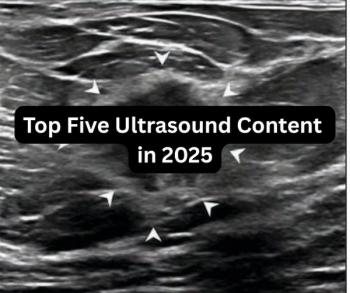
MRI Shows Brain Changes in Obese Adolescents
Magnetic resonance images show brain changes among adolescents who are obese.
Advanced MR imaging revealed disrupted connectivity in the complex regions of the brain involved in regulating appetite among obese teens, according to a new study presented at
Researchers from Brazil investigated the influence of childhood obesity on changes in anatomy and cerebral connectivity through MR imaging. Their hypothesis was that the brain is an organ also affected by high adiposity, particularly the hypothalamus, which is a complex region involved in the regulation of appetite and hormonal homeostasis.
The researchers obtained diffusion tensor images (DTI) of 120 subjects: 59 obese adolescents and 61 healthy adolescents, aged 11 to 18, matched regarding gender, age, and schooling. They had no other known chronic diseases or conditions.
The results showed decreases in the values of fractional anisotropy (FA) among obese pediatric patients compared with healthy controls in the amygdala, hippocampus, thalamus, cingulate gyrus, fornix, insula, putamen, orbital gyrus, and bilateral hypothalamus.
“The data reveal a pattern of involvement among brain regions that are important in the control of appetite and emotions,” study author Pamela Bertolazzi, a biomedical scientist and PhD student in the neuroimaging laboratory at the University of Sao Paulo said in release. “There was no region of higher FA in obese patients compared to the control group,” she added. “If we are able to identify the brain changes associated with obesity, this DTI technique could be used to help prevent obesity and avoid the complications associated with the condition.”[[{"type":"media","view_mode":"media_crop","fid":"64673","attributes":{"alt":"","class":"media-image media-image-right","id":"media_crop_5712786442851","media_crop_h":"0","media_crop_image_style":"-1","media_crop_instance":"8281","media_crop_rotate":"0","media_crop_scale_h":"0","media_crop_scale_w":"0","media_crop_w":"0","media_crop_x":"0","media_crop_y":"0","style":"float: right; height: 550px; width: 550px;","title":"Reduction of functional anisotropy (FA) in obese patients compared to control group (clusters in red), and FA skeleton (green), superimposed on the mean of FA images in the sample. At the intersection of the alignment vectors (coordinates x, y, z: -9, 1, -12), a cluster of FA decrease located in the left hypothalamus (PFWE =
Newsletter
Stay at the forefront of radiology with the Diagnostic Imaging newsletter, delivering the latest news, clinical insights, and imaging advancements for today’s radiologists.




























